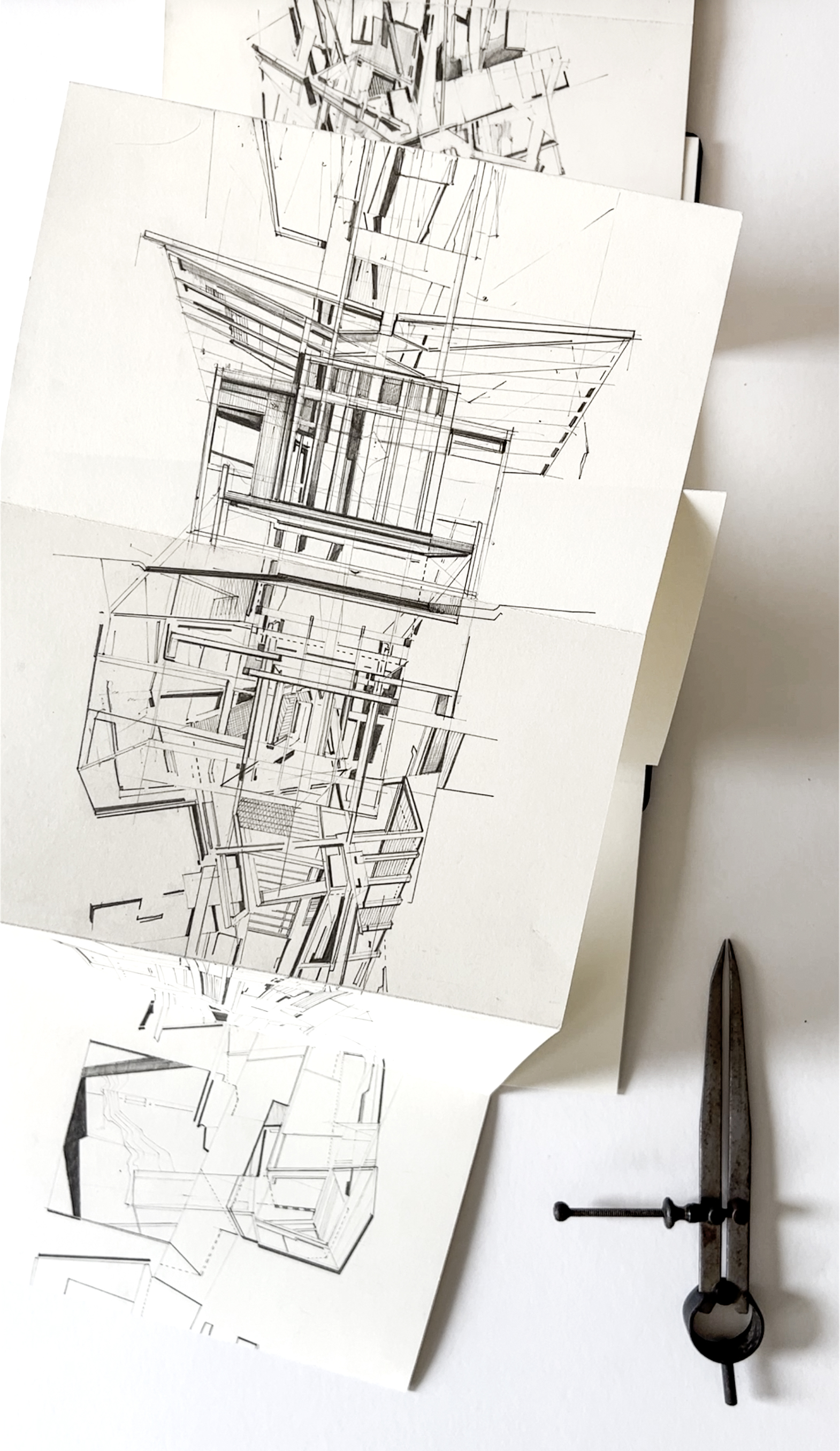Rendering Memory
Contributor
Rendering Fiction

To draw by hand is to think with the body. Drawings are expressive acts unique to the individuals who create them. By necessity, the architectural profession developed drawing methods that enabled these individual actions to conform to a system of architectural drawing conventions by which building design is communicated. Drawing in this context is referred to as hand drafting. Digital design tools have lifted the tyrannies and inefficiencies of hand drafting from the architectural profession, and even from the act of design itself; hand drawings are now free to return to their expressive origins.
Free from the laws of mathematics, the hand is released to explore the geometry of spatial memory, perception, and experience in ways that do not have to align with the Cartesian dependencies of the digital realm. This freedom gives the drawing and the delineator the ability to explore new ways of stitching ideas with realities. Combining the muscle memory of the physical act of drawing with memories of events, times, and places can give rise to new design processes that are not amalgamations of generalized machine-captured datasets.
Drawing is an active way of thinking. Hand drawing has a new potential to be fundamentally different from the typical hand drafting that has dominated architecture for centuries. Architectural ideas are not bound by conventions. Conventions are merely systems of description. In a hand drawn process, a multiplicity of readings emerge on a page as the body seeks to align the muscle memory of mark making with the translation of three-dimensional forms. This process is never perfect. Architectural conventions are typically used to impose mathematical precision where bodily imperfections persist in the drawing. Digital tools are amazingly helpful for this process, as modeling programs natively align to the current paradigm of architectural conventions. However, design ideas rarely adhere to conventions. Ideas are bent memories, mixed realities, and broken conventions—all of which are natively present in drawings created by hand.
Drawing is a free and expressive act and the drawing process is dependent on the human body and its faculties. Human memory, and its counterpart, perception, do not operate according to the logic of Cartesian-based modeling systems. Even though our bodies operate in a three-dimensional world that can be described by coordinate systems, the initial visual information provided by the optic nerve is two-dimensional. These flat images are translated by the brain into a three-dimensional understanding based upon prior experience, i.e., memory.1 Because human perception renders flat images as a three-dimensional environment via the seeing process, the two-dimensional imagery in a drawing, and especially during the drawing process, can be rich, multifaceted, and complex. The world of exploration is much broader when using hand drawings to design because Cartesian logic becomes a tool and not a requirement. Without computational constraints, the designer’s creativity can guide ideation, layering, and exploration of mathematical impossibilities that will inspire spatial innovations. Without three-dimensional certainty, drawings have the potential to express overlapping simultaneity of rich spatial forms and qualities.
Digital reconstructions of hand media often carry a one-to-one translation where apparently formal concepts in a drawing are directly translated to formal resolution in a digital environment. This approach unnecessarily reduces the agency of hand media to a typically formal understanding of architectural design. However, formal considerations, materiality, program, environment, collapsed scalar conditions, and broken conventions can easily coexist within a single drawing. With confidence in the ability of digital documentation to record and translate these formal concepts and qualities, hand drawings can be used to challenge design preconceptions and digital capabilities.
Jerome Tryon is a critic at YSOA, and has a drawing-focused design practice; he is currently completing a number of international fellowships, including at the American Academy in Rome and the Sir John Soane’s Museum in London.
- Eric R. Kandel, “Reconstruction of the World We See: Vision is Information Processing,” in The Age of Insight: The Quest to Understand the Unconscious in Art, Mind, and Brain, from Vienna 1900 to the Present, (New York: Random House Publishing Group, 2012). ↩︎